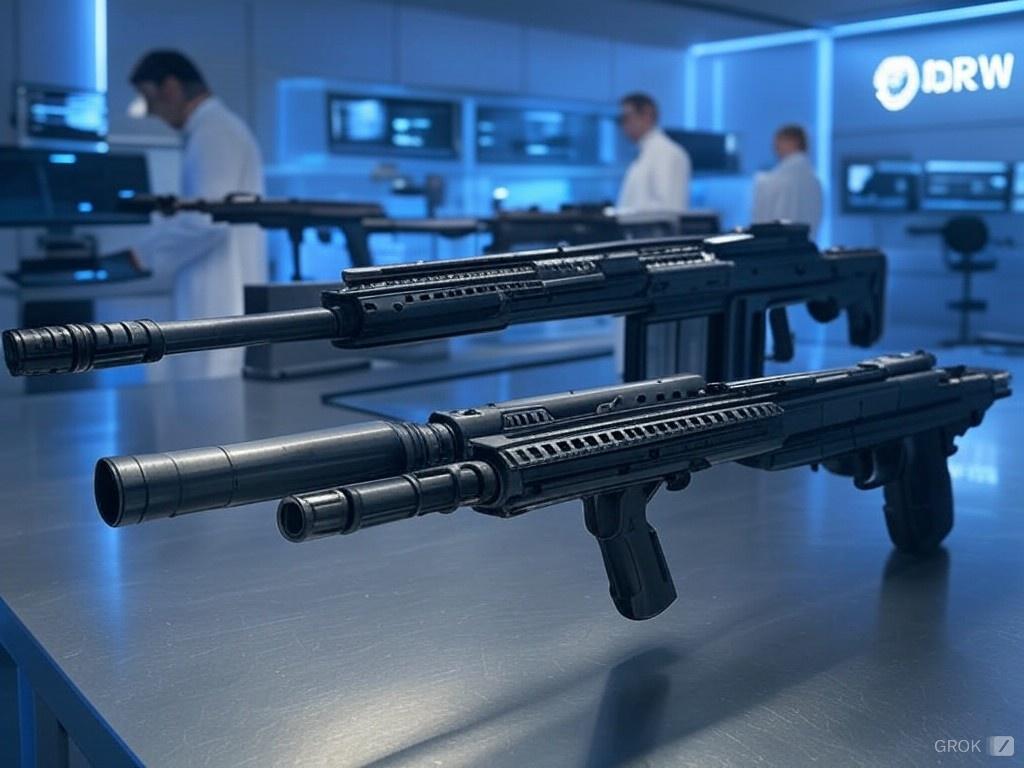SOURCE: AFI


The Light Combat Aircraft (LCA) Tejas, a flagship program of India’s indigenous defense manufacturing capabilities, marked 24 years since its maiden flight on January 4, 2001. While the platform has showcased India’s growing self-reliance in defense technology, the program has faced significant criticism for its sluggish pace of development, delays in production, and limited inductions into the Indian Air Force (IAF) even after more than two decades.
The LCA Tejas, developed by the Aeronautical Development Agency (ADA) and manufactured by Hindustan Aeronautics Limited (HAL), was envisioned as a fourth-generation lightweight, multi-role combat aircraft to replace India’s aging fleet of MiG-21 fighters. It was designed to strengthen India’s defense manufacturing ecosystem and reduce reliance on foreign imports.
Continue readingSOURCE: AFI


As Aero India 2025 approaches, the aerospace community is buzzing with anticipation for new program announcements and project unveilings. However, this enthusiasm is often tempered by the reality of prolonged development timelines in India’s defense public sector undertakings (DPSUs).
Historically, the announcement of new aerospace programs at events like Aero India has been accompanied by the display of scale models, symbolizing future aspirations. Yet, the journey from these announcements to actual flying prototypes typically spans 5-6 years or more. This extended timeline has frequently led to criticism and skepticism about the efficiency and urgency of India’s defense projects.
Continue readingSOURCE: AFI


The Indian Army is making significant strides in operational adaptability by integrating the ATOR N1200 Specialist Mobility Vehicle (SMV) into its arsenal, specifically tailored to conquer the daunting terrains of Sikkim. This innovative vehicle, known for its unparalleled versatility and robustness, is transforming how the military navigates through some of the world’s most challenging landscapes, from snow-laden peaks to rugged, uneven ground.
The ATOR N1200, an indigenized version of the SHERP N1200 from Ukraine, is designed to operate in environments where conventional vehicles falter. With its amphibious capabilities, the ATOR can traverse not only land but also water bodies, making it ideal for the diverse and unpredictable terrains of Sikkim. Its ability to maneuver through dense forests, over rocky outcrops, and across rivers and lakes showcases its true “go-anywhere” potential.
Continue readingSOURCE: AFI


In a significant step towards bolstering India’s indigenous defence manufacturing capabilities, Hindustan Aeronautics Limited (HAL) has established a Contract Negotiation Committee (CNC) with the aim to finalize the agreement for the local production of GE-F414-INS6 engines by March 2025. This development comes amidst ongoing efforts to enhance India’s aerospace sector under the ‘Make in India’ initiative.
The GE-F414-INS6, an advanced variant of the F414 engine, is designed to power India’s next-generation combat aircraft, notably the Tejas MkII. With its 98 kN thrust, this engine offers superior performance compared to the F404 engines currently used in the Tejas Mk1 and Mk1A variants.
Continue readingSOURCE: IDRW.ORG


In a move that signifies deepening defense ties, India and Saudi Arabia have embarked on discussions to jointly explore the co-development of next-generation weapons systems. This collaboration is part of a broader strategic partnership between the two nations, aiming to leverage their respective strengths in defense technology and manufacturing.
The talks, as reported by defense industry insiders and posts found on X, focus on areas where both countries can benefit from shared expertise, particularly in emerging technologies like artificial intelligence, cybersecurity, and unmanned systems. The dialogue aligns with Saudi Arabia’s Vision 2030, which includes ambitions to localize 50% of its defense spending, and India’s ‘Make in India’ initiative, which promotes indigenous design and manufacturing of defense equipment.
Continue readingSOURCE: IDRW.ORG


In response to the evolving aerial threat landscape, particularly the growing menace of loitering munitions and subsonic cruise missiles, the Indian Navy is actively planning to integrate Directed Energy Weapons (DEWs) into its aircraft carrier operations. This initiative aims to provide a robust defense mechanism against these modern threats, ensuring the safety and operational integrity of India’s naval aviation assets.
Loitering munitions, sometimes referred to as “suicide drones,” and subsonic cruise missiles represent a significant challenge due to their low cost, high maneuverability, and ability to loiter over a target area before striking. These weapons have shifted the dynamics of naval warfare, necessitating innovative defense solutions like DEWs, which offer speed-of-light engagement capabilities, potentially neutralizing threats before they can cause damage.
Continue readingSOURCE: AFI

Recent claims on the social media platform X by user Tony (@Cyberspec1) suggested that India had confirmed the dispatch of supersonic “BrahMos” cruise missiles to Armenia. These assertions, however, appear to be unfounded based on the technical specifications and operational readiness of Armenia’s Su-30SM fighters.
Tony @Cyberspec1 stated that the BrahMos cruise missiles, which can be launched from Su-30 fighters, had been sent to Armenia, leveraging the fact that Armenia possesses Su-30 aircraft.
Continue readingSOURCE: AFI


The race to upgrade indigenous fighter jets in South Asia is heating up, with both Pakistan and India pushing their respective aircraft programs forward. The Pakistan Air Force (PAF) is on the brink of introducing the JF-17 Block 4 under the PF-X (Pakistan Fighter Experimental) program, aiming for a debut in 2028. This development prompts a reflection on how India’s Tejas MkII could have potentially evolved beyond its current 4.5 generation designation.
The JF-17 Block 4 is expected to feature an IWB, although limited by space. This allows for a cleaner radar signature when flying without external ordnance, potentially enhancing stealth capabilities for initial engagements. However, the limited size means only a small number of Beyond Visual Range Air-to-Air Missiles (BVRAAMs) can be carried internally.
Continue readingSOURCE: AFI


In an effort to modernize its military capabilities, Thailand has shown a keen interest in Indian-made armoured vehicles, as highlighted during the recent India-Thailand Defence Cooperation Seminar. This event served as a platform for Indian defense manufacturers to showcase their technological advancements and capabilities, potentially paving the way for further military cooperation between the two nations.
During the seminar, several Indian companies presented a range of armoured vehicles, emphasizing the quality, innovation, and cost-effectiveness of Indian defense products. Among the highlights were.
Continue readingSOURCE: AFI


Over the last seven years, Bhutan has witnessed a significant erosion of its territorial sovereignty, losing approximately 2% of its land to Chinese encroachments, as revealed by the latest satellite imagery analysis. This development is part of a broader strategy by China, which has established at least 22 villages and settlements within Bhutanese territory over the past eight years. Eight of these villages have been constructed since 2020, particularly in areas near the Doklam plateau, a region of strategic importance due to its proximity to the trijunction of India, Bhutan, and China.
Satellite imagery and reports from various international news outlets and think tanks have documented China’s methodical approach to altering the territorial status quo in Bhutan. This involves not just the physical construction of settlements but also the relocation of thousands of people into these areas, effectively creating facts on the ground. The villages near Doklam are particularly alarming, as this plateau has been the site of previous stand-offs between Indian and Chinese forces in 2017, highlighting its strategic military value.
Continue readingSOURCE: AFI


In a recent operational review, Lieutenant General Manoj Kumar Katiyar, Army Commander of the Western Command, thoroughly assessed the operational readiness of the Rising Star Corps. The review not only celebrated the Corps’ high standards of preparedness but also spotlighted the integration of cutting-edge technology into military operations. The most intriguing aspect observed was the demonstration of the Carl-Gustaf M4 recoilless rifle equipped with remote firing capabilities.
The highlight of the review was the Carl-Gustaf M4 recoilless rifle, observed on a steel jig with remote firing capabilities. This setup intrigued observers as it showcased a significant evolution in how infantry weapons might be deployed in future conflicts.
Continue readingSOURCE: RAUNAK KUNDE / NEWS BEAT / IDRW.ORG


In a strategic pivot, the Indian Air Force (IAF) is increasingly leaning towards using air-launched ballistic missiles (ALBMs) for its long-range strike missions. This shift is largely influenced by the vulnerabilities observed in subsonic cruise missiles, even those with stealth capabilities, which have proven easier for modern air defence systems to intercept due to their predictable flight paths.
The IAF has already integrated the Rampage and ROCKS ALBMs, both of which are imported from Israel. These missiles are designed for precision strikes against high-value, hardened targets. Local production of these missiles is underway, signaling a move towards self-reliance and cost-efficiency in defence acquisitions.
Continue readingSOURCE: RAUNAK KUNDE / NEWS BEAT / IDRW.ORG


In a significant step towards enhancing its aerial combat capabilities, the Indian Air Force (IAF) has initiated the procurement of a limited number of Astra MK2 missiles, marking the beginning of the production process for this advanced Beyond Visual Range Air-to-Air Missile (BVRAAM).
The Astra MK2 is an evolution of the Astra MK1, which has already been integrated into several IAF fighter aircraft, including the Su-30MKI and the indigenous Light Combat Aircraft (LCA) Tejas. The MK2 variant boasts several enhancements.
Continue readingSOURCE: RAUNAK KUNDE / NEWS BEAT / IDRW.ORG


The Combat Vehicles Research and Development Establishment (CVRDE), a premier lab under India’s Defence Research and Development Organisation (DRDO), has announced plans to develop a new 700HP engine specifically tailored for the Zorawar Light Tank. This initiative comes as the Zorawar project moves towards full-scale production, aiming to enhance the tank’s performance on India’s rugged terrains.
The current prototype of the Zorawar Light Tank is powered by an American-made Cummins 750HP engine. This same engine is slated to equip the first batch of 59 units. However, looking ahead to the broader production phase, where 240 more units are expected to be manufactured, CVRDE has proposed an indigenous solution with its 700HP engine.
Continue readingSOURCE: AFI


In an exciting development for India’s defence sector, the Archer NG, a Medium Altitude Long Endurance (MALE) Unmanned Aerial Vehicle (UAV), is on the brink of conducting its first flight. Sources indicate that the UAV has successfully completed both low-speed and high-speed taxi trials, setting the stage for its maiden sortie likely in February.
The completion of these trials is crucial as they simulate the conditions of actual flight, testing the aircraft’s systems under controlled ground conditions. Low-speed taxi trials ensure that the UAV can handle basic movement, steering, and braking, while high-speed trials test the integrity of the airframe, control surfaces, and propulsion at near-flight speeds.
Continue reading